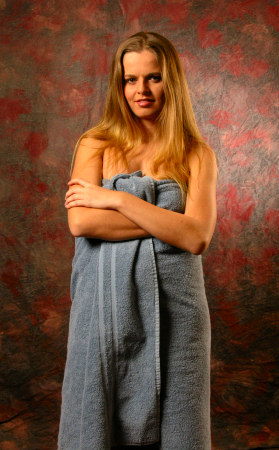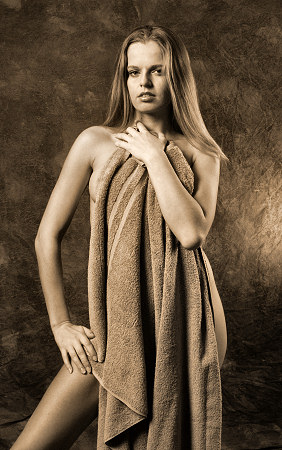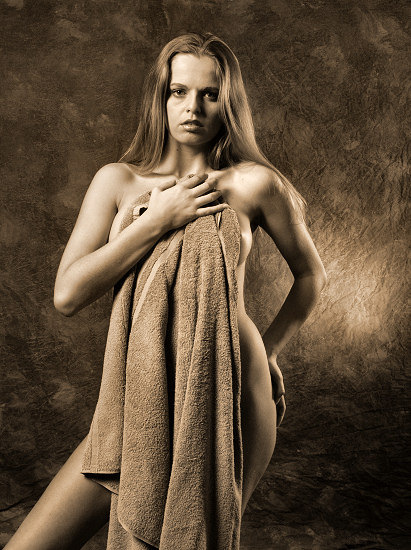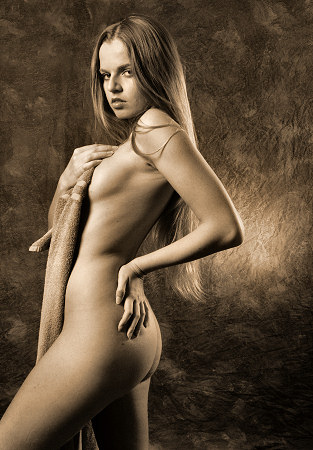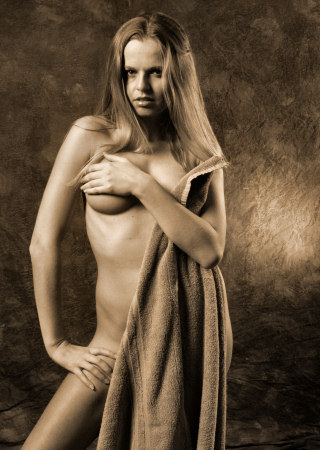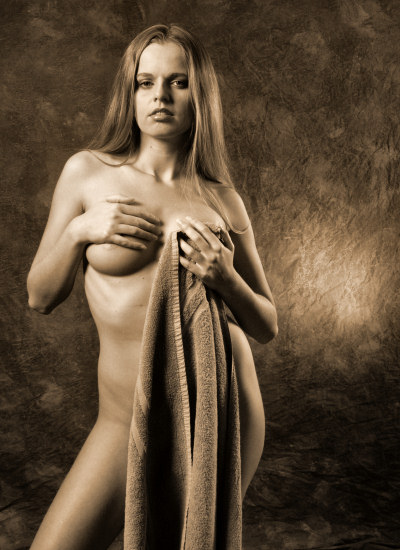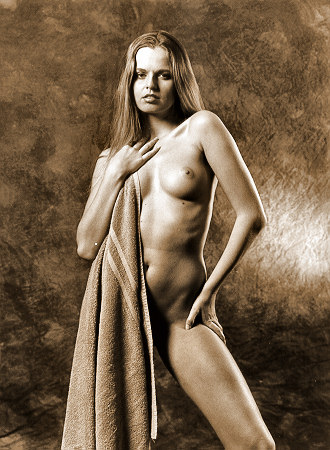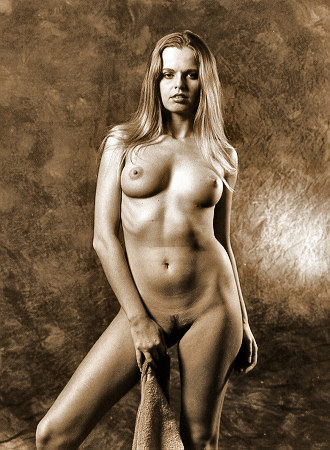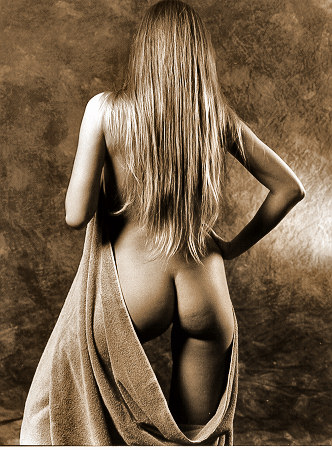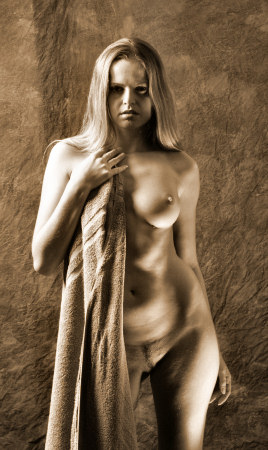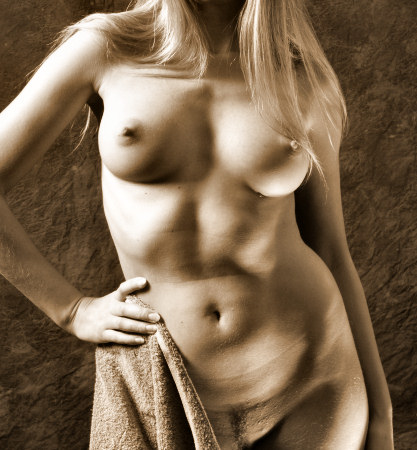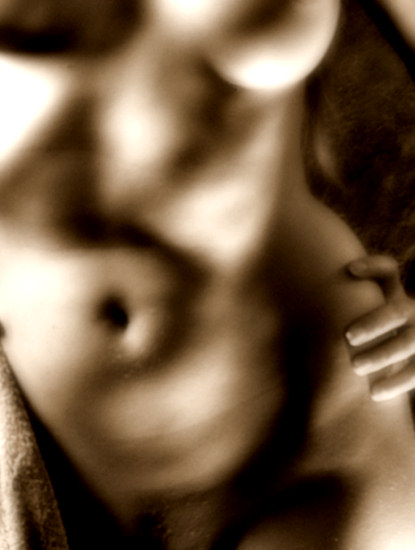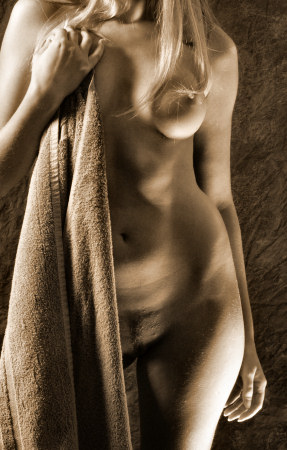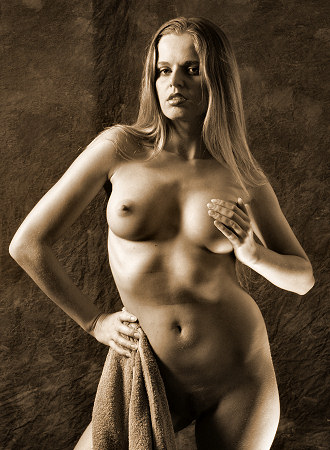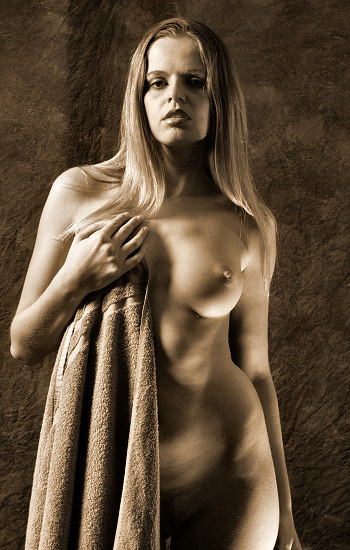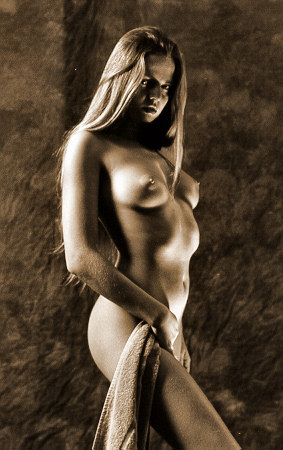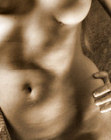|
|
Okay, I
got nothing!
I'm a bit of a
cerebral photographer, meaning that I like to plan a few concepts for
each sitting, but I get those ideas from my "processing" of
the previous sittings. Now, that's just me & my style -- I
think about photography a lot, and by thinking about it, I can manage
to challenge myself to try new things & to get better at what I'm
doing. I will admit that there are a lot of other photographers
who are more "organic" than I am -- they just wait for the
sitting & try what feels good at the moment. Okay, to be
honest, I do 70% planned stuff & 30% improvised stuff during a
typical sitting, but this sitting was only one week after my previous
sitting, and I had no pre-planned ideas. So, we
"winged" it.
|
|
|
|
The
reason I like to plan setups
is because by planning, I can
avoid falling back onto old
concepts. But some of
those old concepts are pretty
good, too.
So,
I set up some nice generic
lighting while Ashton gets
ready. She arrives
wearing a towel, and I figure
I'll play with it some.
I like having the model
somewhat or mostly covered --
it's a bit more
exciting. So, to start,
Ashton plays with the towel.
|
| See?
There's nothing but a towel between you & a totally nude &
beautiful model! I love seeing that thin strip of uninterrupted
skin that starts at her shoulder & runs down past her hips:
see, she really is nude under that towel.
|
|
| Between
you & me, not having some plans for this sitting was a bit
disturbing for me. Fortunately, Ashton is so darn easy to be
around. She is totally comfortable with her body, she is
confident, and she is fun loving. (Oh, yes, she is damn sexy,
too!)
I like this towel
play concept. There is an important artistic premise:
"Less Is More". Somehow, a partially covered model is
more exciting than a fully nude one.
|
|
|
|
One
summer, when I was in my mid-teens, I
went to a summer art
school. One assignment
was to demonstrate the
difference between a
"hot" medium and a
"cool" medium.
I took two Playboy centerfold
pictures & put them on the
bulletin board. One
showed a model is typical
skimpy lingerie; the other
showed a model wearing only
bikini bottoms, taking a
strong stance with hips jogged
to the side. (At that
time, Playboy didn't show
pubic hair.) I cut out
two strips of black
construction paper, and using
push pins, I covered the
second model's breasts &
bikini bottoms. People
walking by ignored the first
image, where the model was
actually showing more skin;
instead, they walked up to the
second picture, removed the
push pins to reveal the
model's breast, and they were
surprised & disappointed
to find that she had bikini
bottoms on underneath the
second black strip of paper.
Think
about that! This was a
significant influence in the
development of my artistic
style.
|
| It's
important to keep things moving during a sitting. I shift that
one light that was pointed on the backdrop -- I move it to the floor
& use it as a up light. This worked well with Ashton's curvy
& muscular figure. |
|
|
|
| Here's
some alternative post-processing, making an abstract image.
Whatcha think? |
|
|
Ashton
moves well. She wears
light like most people wear
clothes.
If
you work with figure
photography for a while,
you'll find that there are
lots of lighting setups that
work well for the figure but
poorly for the face, and vice
versa. Here's an
example: I love how the
light sculpts Ashton's figure
& how each curve &
shape is defined, but the
light on her face is like a
1930s horror movie.
Still, it's a pleasing image
overall.
|
|
| Ashton
is a joy to be around. Despite
having no preconceived ideas for this
sitting, I feel that we are off to a
good start. Having no ideas, I
fall back on some general thoughts
that I keep floating around.
Specifically, I don't photograph
models horizontally often
enough. In fact, I feel that I
am better at lighting a
standing/sitting model than I am in
lighting a model lying down. So,
I ask Ashton to lie down so that I can
practice. I'm liking the texture
of the towel against her skin, so the
towel comes along.
This
sitting continues with Towel
Repellent
|
